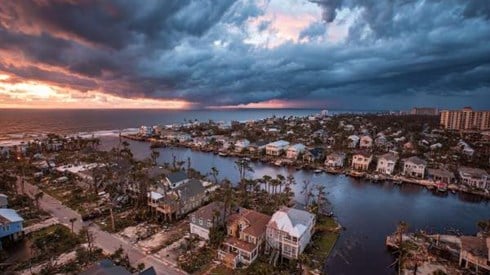KBRA Report Highlights Uncertainty in FEMA's Future Role and Funding

November 17, 2025

KBRA has released new research titled Preparedness Policy in Limbo: FEMA, Federal Funding, and the Future of Disaster Recovery, examining the evolving outlook for federal disaster recovery support and the implications for US state and local governments and the insurance industry.
The report notes ongoing concerns raised by federal oversight bodies regarding Federal Emergency Management Agency (FEMA) operational capacity, including response speed, staffing adequacy, and the stability of its funding pipeline, per the report. Recent findings from the US Government Accountability Office and a January White House executive order have drawn attention to the agency's constraints and the need for structural improvements, according to KBRA.
According to the report, uncertainties around how Congress and the Trump Administration will define FEMA's responsibilities could shift more disaster recovery costs to states and localities. KBRA said there is no guarantee that future federal funding levels will match historical support, reflecting a broader policy debate on the federal government's long-standing role as the ultimate safety net for climate-related losses.
A key theme in the report is FEMA's central relationship with the insurance sector, especially through its administration of the National Flood Insurance Program (NFIP), per KBRA. According to the report, FEMA's work with insurers on flood coverage, resilience initiatives, modeling, and mitigation programs remains essential to supporting national disaster risk management.
The report warns that any significant reduction in FEMA's mandate or funding could reverberate through insurance and capital markets, according to KBRA. Per the report, insurers, reinsurers, and policyholders could face increased financial exposure and volatility if federal recovery resources become more limited or less predictable in the future.
FEMA's support for mitigation, hazard modeling, and the NFIP's premium-setting framework also represents an important stabilizing influence on risk transfer markets, according to the report. KBRA said that FEMA's programs help reduce future losses through initiatives such as resilience credits, community mitigation projects, and ongoing collaboration with the insurance industry.
The potential reforms described in the report include changes to cost-sharing structures, declarations thresholds, and federal-state responsibilities, per KBRA. According to the report, these reforms could increase the administrative burden on states while also encouraging stronger pre-disaster planning and investment.
Any restructuring of FEMA's programs could also affect the pace and predictability of post-disaster reimbursements, according to KBRA. The report notes that states and local issuers may need to prepare for more up-front costs, expanded administrative requirements, and greater uncertainty around the timing of federal support.
The analysis underscores that FEMA's coordination with insurers is tied directly to the functioning of the NFIP, catastrophe modeling, and broader risk transfer markets. Per the report, these linkages mean that changes to FEMA's scope could influence underwriting stability, pricing trends, and long-term availability of coverage for high-risk areas.
KBRA concludes that shifts in federal disaster recovery policy would require close monitoring by municipal issuers and insurance market participants. The report states that changes to FEMA's mission or funding could reshape financial risk levels for governments, private insurers, and communities facing climate-driven hazards.
November 17, 2025
